January29
I know I’ve vowed to join no more challenges this year, but Rose City Reader just posted these first two and they’re only three books each. They run from 01Feb10 to 31Jan11.
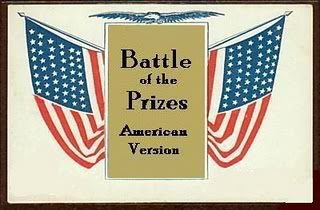
The Battle of the Prizes American Version pits winners of the Pulitzer Prize for fiction against the winners of the National Book Award.
The first book must have won both prizes (6 books meet this criterium), the second book is a Pulitzer Prize winner only and the third book is a National Book Award winner only.
These are my selections, subject to change:
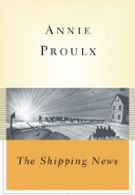
1) Shipping News by E. Annie Proulx
by E. Annie Proulx
Proulx has followed Postcards , her story of a family and their farm, with an extraordinary second novel of another family and the sea. The fulcrum is Quoyle, a patient, self-deprecating, oversized hack writer who, following the deaths of nasty parents and a succubus of a wife, moves with his two daughters and straight-thinking aunt back to the ancestral manse in Killick-Claw, a Newfoundland harbor town of no great distinction.
2) one of:
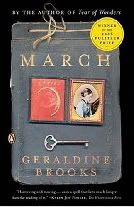 March
March by Geraldine Brooks (ready for pickup at the library)
by Geraldine Brooks (ready for pickup at the library)
Brooks’s luminous second novel, after 2001’s acclaimed Year of Wonders, imagines the Civil War experiences of Mr. March, the absent father in Louisa May Alcott’s Little Women. An idealistic Concord cleric, March becomes a Union chaplain and later finds himself assigned to be a teacher on a cotton plantation that employs freed slaves.
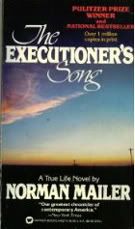
The Executioner’s Song by Norman Mailer (has been on my own shelves unread for years)
by Norman Mailer (has been on my own shelves unread for years)
The true story of Gary Gilmore, who in 1977 became the first person executed in the United States since the reinstitution of the death penalty. Gilmore, a violent yet articulate man who chose not to fight his death-penalty sentence, touched off a national debate about capital punishment. He allowed Norman Mailer and researcher Lawrence Schiller complete access to his story. Mailer took the material and produced this immense book…What unfolds is a powerful drama, a distorted love affair, and a chilling look into the mind of a murderer in his countdown with a firing squad.
or
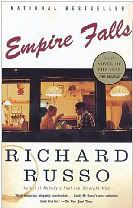 Empire Falls
Empire Falls by Richard Russo (just sounds great)
by Richard Russo (just sounds great)
In his biggest, boldest novel yet, the much-acclaimed author of Nobody’s Fool and Straight Man subjects a full cross-section of a crumbling Maine mill town to piercing, compassionate scrutiny, capturing misfits, malefactors and misguided honest citizens alike in the steady beam of his prose.
and
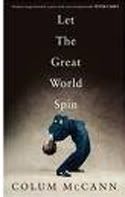 3) Let the Great World Spin
3) Let the Great World Spin by Colum McCann (in my pile of TBR library books)
by Colum McCann (in my pile of TBR library books)
McCann’s sweeping new novel hinges on Philippe Petit’s illicit 1974 high-wire walk between the twin towers. This extraordinary, real-life feat by French funambulist Philippe Petit becomes the touchstone for stories that briefly submerge you in ten varied and intense lives. It is the aftermath, in which Petit appears in the courtroom of Judge Solomon Soderberg, that sets events into motion.

The Battle of the Prizes British Version pits winners of the English Man Booker Prize against winners of the Scottish James Tait Black Memorial Prize.
The first book must have won both prizes (only 3 books qualify), the second book is a Man Booker Prize winner only and the third book is a James Tait Black Prize winner only.
These are my selections, subject to change:
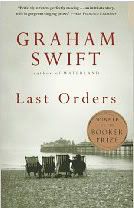
1) Last Orders by Graham Smith
by Graham Smith
a quiet but dazzling novel about a group of men, friends since the Second World War, whose lives revolve around work, family, the racetrack, and their favorite pub. When one of them dies, the survivors drive his ashes from London to a seaside town where they will be scattered, compelling them to take stock in who they are today, who they were before, and the shifting relationships in between.
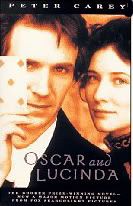
2) Oscar and Lucinda by Peter Carey
by Peter Carey
This is a story of mid-19th century England and Australia, narrated by a man of our time and therefore permeated with modern consciousness. Oscar is a shy, gawky, Oxford-educated Church of England minister with a tortured conscience; Lucinda is a willful, eccentric Australian who sinks her family inheritance into a glass factory; and the basis for the star-crossed love that develops between them is a shared passion for gambling; and
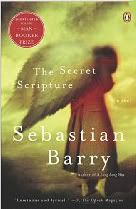 3) The Secret Scripture
3) The Secret Scripture by Sebastien Barry
by Sebastien Barry
The latest from Barry (whose A Long Way was shortlisted for the 2005 Booker) pits two contradictory narratives against each other in an attempt to solve the mystery of a 100-year-old mental patient. That patient, Roseanne McNulty, decides to undertake an autobiography and writes of an ill-fated childhood spent with her father, Joe Clear, A cemetery superintendent who is drawn into Ireland’s 1922 civil war.
AND
Since I’m reading books for the British Battle of the Prizes, I thought I may as well enter the Typically British Challenge hosted by Book Chick City.
It’s likely that I’ll read 8 British novels this year, but I want to enter at the Bob’s Your Uncle level because I love that phrase, and every time I hear it, I think “No, Bob’s my father.” It’s sort of bittersweet.
Bob’s Your Uncle requires me to read 6 novels by British authors in the 2010 calendar year.
1. The Lost Art of Keeping Secrets by Eva Rice
Mrs. Q, Book Addict, is hosting (for the first time) a challenge of her invention: The Canadian Authors Challenge 2010. 
I love CanLit and think I’ll fairly easily be able to complete the 10 books. (Mrs. Q: we need some titles on these levels. From the heart of Nova Scotia, I’ll contribute Bluenoser. What do you think?)
I’m looking forward to this one. And while we’re on the subject of things Canadian:
Chapters/Indigo link for Canadian readers:
The Shipping News
March
Empire Falls
Let The Great World Spin
Last Orders
Oscar and Lucinda

Or, even better, buy from an independent book seller by searching this site that has links to independent booksellers across North America.
P.S. If you click through the affiliate links in the book titles, you may notice a different cover. I like to see the cover that’s on the copy I read – and it’s usually different than Amazon.com because they display the American release, and I read the Canadian. Again, the links are affiliate links so I will receive a small percentage of any purchase you make after clicking through from this blog.


 Hmmmmm…categories are Fitness, Chef, Wine & Spirits, Beauty, Hair & Fashion. If I want to know how to pair wine with take-out meals or what three coats every woman should have (definitely need that bejeweled evening number to wear to the fracking meeting), I’m set.
Hmmmmm…categories are Fitness, Chef, Wine & Spirits, Beauty, Hair & Fashion. If I want to know how to pair wine with take-out meals or what three coats every woman should have (definitely need that bejeweled evening number to wear to the fracking meeting), I’m set. than a camel hair trench, I’m feeling a little out of the loop.


 In the
In the 
 These heat water by burning wood very efficiently and can tie in to existing hot water baseboards, forced air, or in floor heating. This unit could also possibly heat both buildings and has the advantage of needing to be fed only once every 12 hours or so. In addition, the firewood pieces can be much larger than what would fit into a wood stove (or even the basement wood furnace) and would save on chopping/splitting – either in time or money.
These heat water by burning wood very efficiently and can tie in to existing hot water baseboards, forced air, or in floor heating. This unit could also possibly heat both buildings and has the advantage of needing to be fed only once every 12 hours or so. In addition, the firewood pieces can be much larger than what would fit into a wood stove (or even the basement wood furnace) and would save on chopping/splitting – either in time or money.
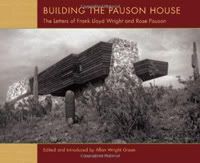 Told in the form of more than fifty previously unpublished letters written between 1938 and 1943–alongside rare site photographs and Wright’s architectural drawings–
Told in the form of more than fifty previously unpublished letters written between 1938 and 1943–alongside rare site photographs and Wright’s architectural drawings–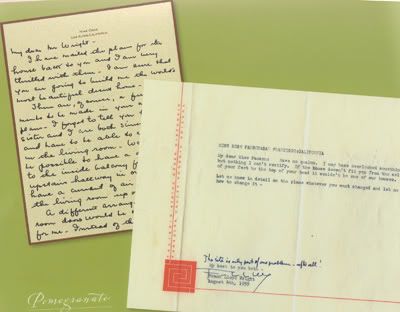 Building the Pauson House: The Letters of Frank Lloyd Wright and Rose Pauson
Building the Pauson House: The Letters of Frank Lloyd Wright and Rose Pauson

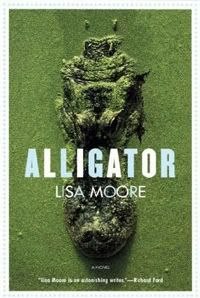

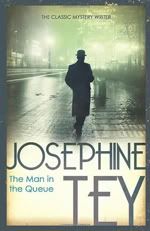 The first book in the series,
The first book in the series, 
 When that happens, we fall back on oil. We have a small (half) tank that holds about 300 litres (approximately 80 gallons). At the time of last week’s fill-up, oil was $1.02 litre (about $3.85 U.S. gallon). Translated, that means that a tank of oil that costs $295. will last 7-10 days. That’s anywhere from $900 to $1,100 per month–and it’s not even a comfortable heat.
When that happens, we fall back on oil. We have a small (half) tank that holds about 300 litres (approximately 80 gallons). At the time of last week’s fill-up, oil was $1.02 litre (about $3.85 U.S. gallon). Translated, that means that a tank of oil that costs $295. will last 7-10 days. That’s anywhere from $900 to $1,100 per month–and it’s not even a comfortable heat.

 As someone who has lived through a successful PhD dissertation, I must admit that dusty old books and grand European libraries are welcome companions. Spending days perusing nineteenth-century French etiquette books in Paris’ Bibliothèque nationale was my idea of the perfect research adventure. All of that changed, however, when Madame Léon Grandin’s lively travel account of her stay in Chicago during the 1893 World’s Columbian Exposition fell into my lap.
As someone who has lived through a successful PhD dissertation, I must admit that dusty old books and grand European libraries are welcome companions. Spending days perusing nineteenth-century French etiquette books in Paris’ Bibliothèque nationale was my idea of the perfect research adventure. All of that changed, however, when Madame Léon Grandin’s lively travel account of her stay in Chicago during the 1893 World’s Columbian Exposition fell into my lap. 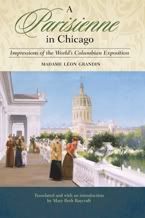


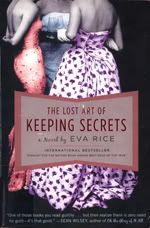
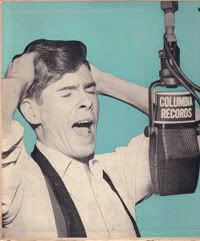 I loved listening to those records but despite my best efforts, my friends never came to share my enthusiasm for Johnnie. Even their parents gave me odd looks. So I was delighted to be able to share the thrill of Johnnie with the two young protaganists of The Lost Art of Keeping Secrets, Penelope and Charlotte, who eventually score front row seats for Johnnie’s London concert.
I loved listening to those records but despite my best efforts, my friends never came to share my enthusiasm for Johnnie. Even their parents gave me odd looks. So I was delighted to be able to share the thrill of Johnnie with the two young protaganists of The Lost Art of Keeping Secrets, Penelope and Charlotte, who eventually score front row seats for Johnnie’s London concert.
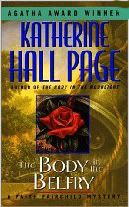
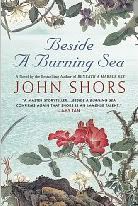





 3)
3) 


 3)
3) 

